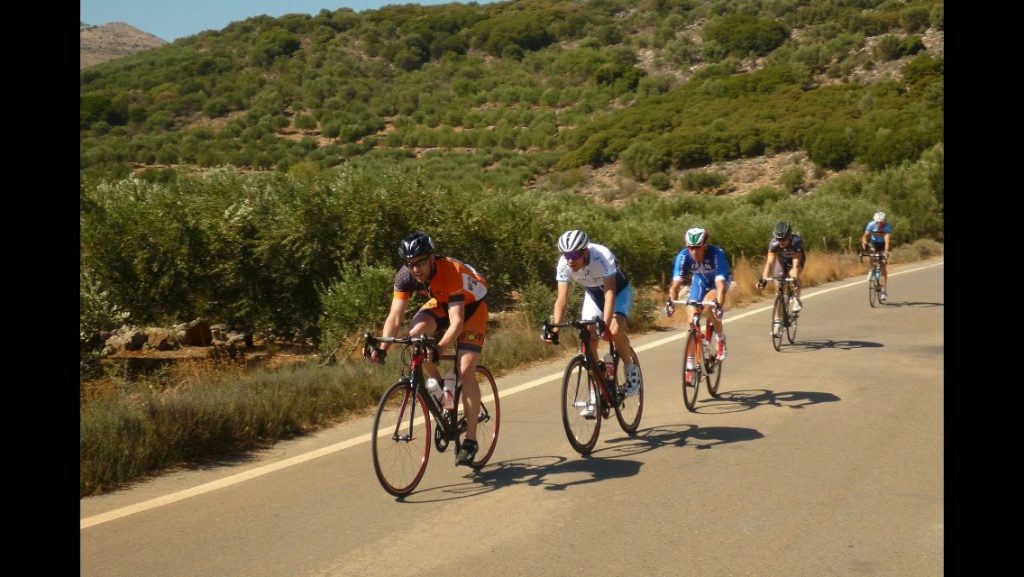
Aerodynamics are Key
It’s no secret anymore, if you aren’t paying attention to your aerodynamics, you are leaving big gains on the table. If you are in an event where time/speed is the deciding factor, you need to look at this.
I work with a few Time Trialists and Triathletes, and there is no way to ignore how important this is. In the picture on the left, I’m aero testing my hands a little higher than usual. It’s at an outdoor velodrome on a nice still day, found a few gains that day…but this position wasn’t faster than my normal position with hands about 4 cm lower (normal position is in the photos adjacent to strategy 1).
The reason getting aero is so important in cycling is because of the speeds involved. You’re going pretty fast in a TT and because aerodynamic drag increases at speed cubed, the faster you go, the less impact small increases in watts will have and the more impact aero drag will make. We spend so much time and effort increasing the power we put into the bike, and that important too, but we need to look at the other side of the equation also.
Dan Bigham, who is probably the best-known aero expert out there, has spent most of his time looking at this problem from the other side of the equation…the energy outside. This includes aero drag, friction, drive train losses, rolling resistance, etc. With aero being the biggest of these. And since over 80% of that drag comes from you, the rider, your position on the bike is where some really big gains can be found.
How to get FASTER!!
It’s a 3D puzzle; you are trying to reduce the drag the air has on you as you pass through it, so it’s tough to see!! People tend to focus on the front end, worrying about how they are punching the hole in the air. However, the wake you leave behind is also significant and is less easy to deal with.
There are 2 strategies available to most people:
- Looking at photo’s and video’s
- Testing things out on the bike
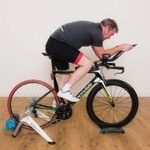
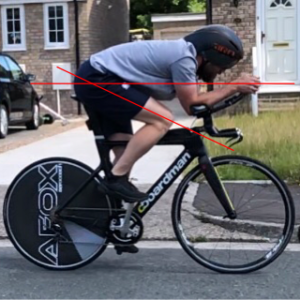
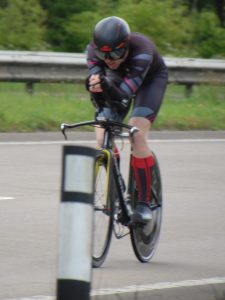
Strategy 1 – Photos and Videos
Whether on the turbo, out on the bike or from races, there is some value in reviewing photos and videos. I see a lot of people asking the good folk on Facebook what they think of their position and asking for advice. There’s definitely good and bad advice handed out!! But I think when starting out or reviewing fairly big things, looking at photos or videos is not a bad place to start.
When you first try and think about your position, there’s probably a fair bit of low-hanging fruit that allows these gains to be made from a simple review. Also, I’ve used this to see if I maintain my position during harder efforts when I’m at my limit. Pictures from races are good for that too. I sometimes see a picture from a TT and realise I’m not in the position I’m supposed to be, so there’s work to be done…gains to be made!
I will say this strategy is, ultimately, extremely limited in its scope. Though you pick off some easy and obvious stuff, and you can learn a lot from race photos. After that, you are going to struggle. Because cycling aero is such a tricky problem with so many influences, you will need to use strategy 2 for things like helmet and skinsuit selection and which hand/bar position is faster…there’s just no way to tell from a picture or video for the finer details.
Strategy 2 – Real World Testing
There’s really no substitute for testing.
On the right, you can see testing results from 3 position changes (Baseline, test 1, test 2, test 3). I think this was from changes in stem length from memory. As you can see, one was very close to the baseline, one was a decent bit faster, and one was a decent bit slower. This is just one test, so I would tend to go back another day and test again, or A, B, A, B test the two best.
This is a great way to test. You have to be fairly methodical, making sure you do things in a logical order and being careful not to confound variables.
There are a number of ways to do this, most based on the Chung method, though direct measurement with an aero sensor is also possible if you have access to one.
The Chung method is more accessible for most and can be done with minimal equipment. Essentially, all you need to do is repeat the same experiment over and over while trying to change only one variable.
This could be as simple as repeatedly rolling down a hill and comparing the distance you travel in each position. The method I have used the most is on an outdoor velodrome. Repeating efforts at similar power, with one change in position each time. You can see the results of one of my tests on the right.
I used Golden Cheetahs’ AeroLab feature to analyse the data after the event. It’s free to download online and is extremely good. Again, it’s important to reinforce the importance of a methodical approach. I used to do a baseline, then all my tests, then put the bike back to baseline and check the consistency.
You can use this method to check equipment or position, and as you gain experience you can get very accurate results. Each step forward can be built on and you go faster as a result 🙂
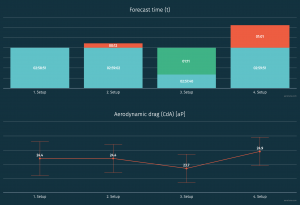
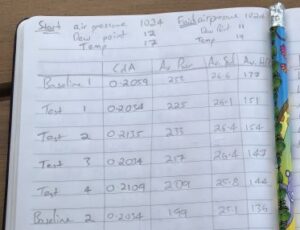
The Only Way to Get Faster is…
Ultimately, there is only one way to get faster, and that is spending time!! There’s no real way around it. Even if you throw money at the problem, you still need to test what is faster for you. Marketing strategies have long been based around ‘this product is 10% faster than any other!’ But is it? Is it faster for you? Even things like wheels, are they faster on your frame? Are they the best option at the speeds you race or the conditions you will race in?
Testing is the only way to know…and IT TAKES TIME!!
Don’t think you’ll go to a wind tunnel or dedicate a day to testing and get the perfect position in one go! I always found gains every time I tested. But I also always finished a session with a few more questions that needed answering!!
For example, I’d done repeated tests on my front-end position and iterated a really nice position, but then I thought to test helmets…is the best bar position still the best with the new helmet? Or when I changed to shorter cranks and adjusted my saddle, I had to test lots of front-end positions again as I felt my overall shape had changed. Test, test, test…
I would usually spend 2-3 hours testing at the velodrome, and it was always well worth it. Keep notes as you go and jot down future ideas…there’s always something else to test!!
Now I live in Switzerland; I don’t have access to anything like the Maindy velodrome I did most of my testing at. So I started using the Aerotune app (aerotune.com). This allows me to do out-and-back testing, which proved fruitful last spring. I found a few gains through helmet testing and changing stem lengths last spring.
I’ll hopefully be switching to a direct measurement system this year, but that isn’t 100% for sure yet…will update you when there is news.
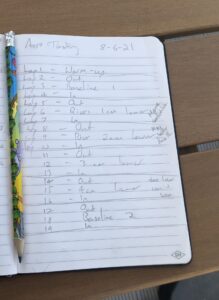
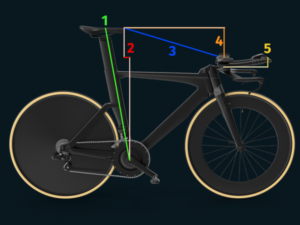
Any Questions?
Feel free to get in touch if you have any questions, always happy to help.

